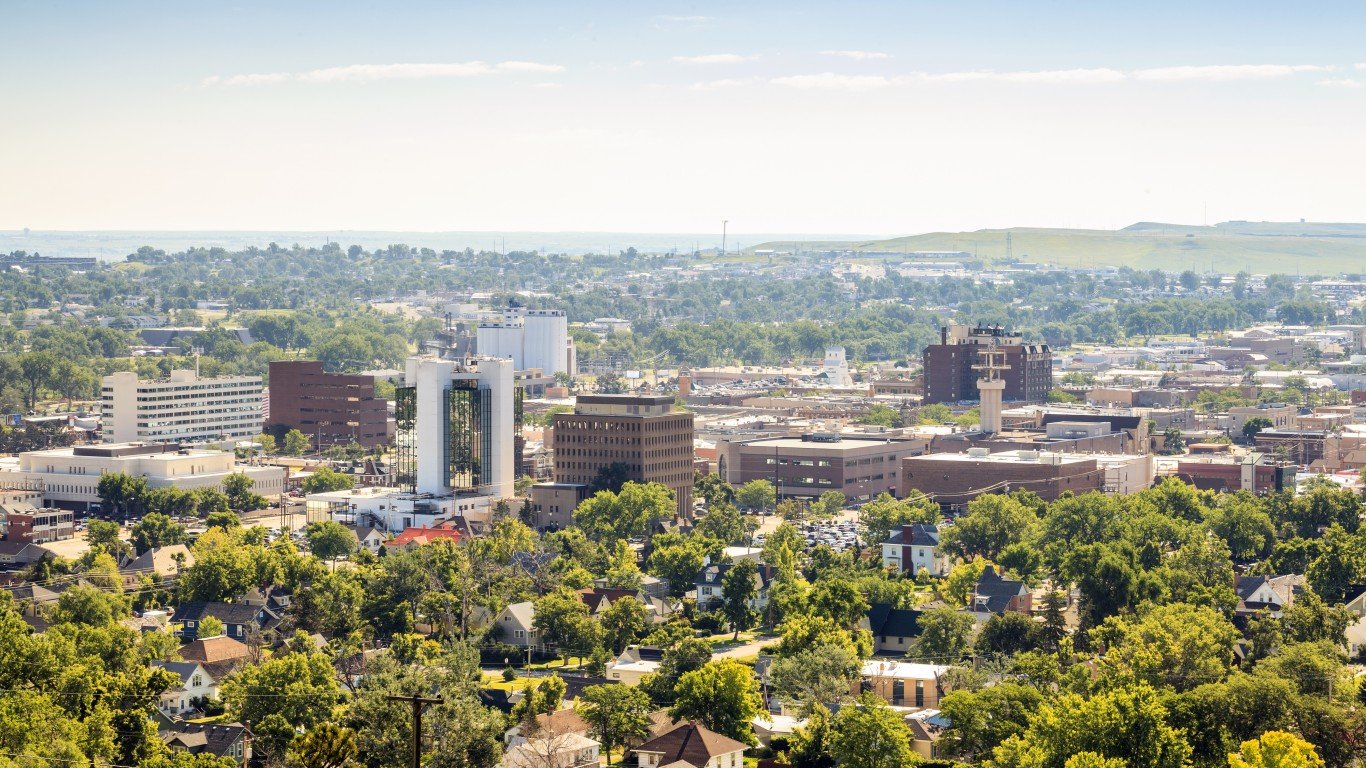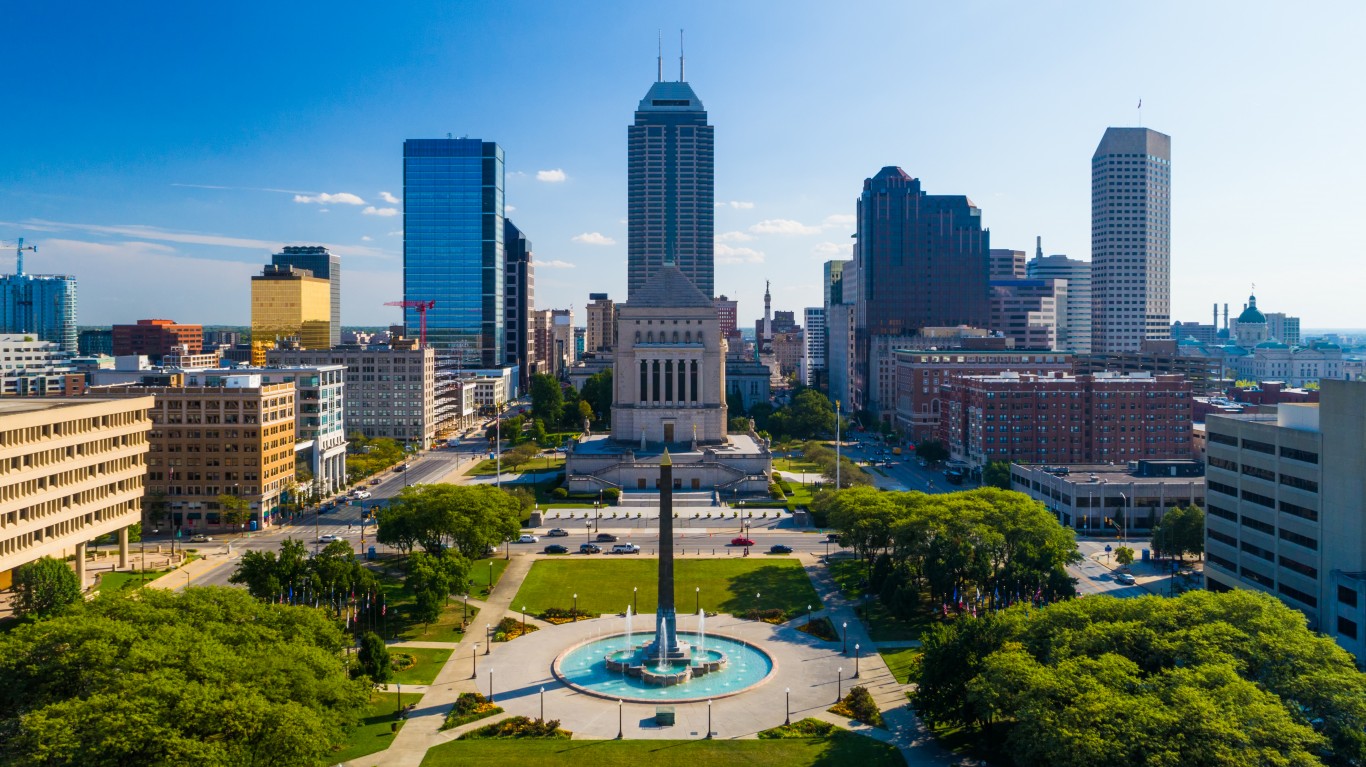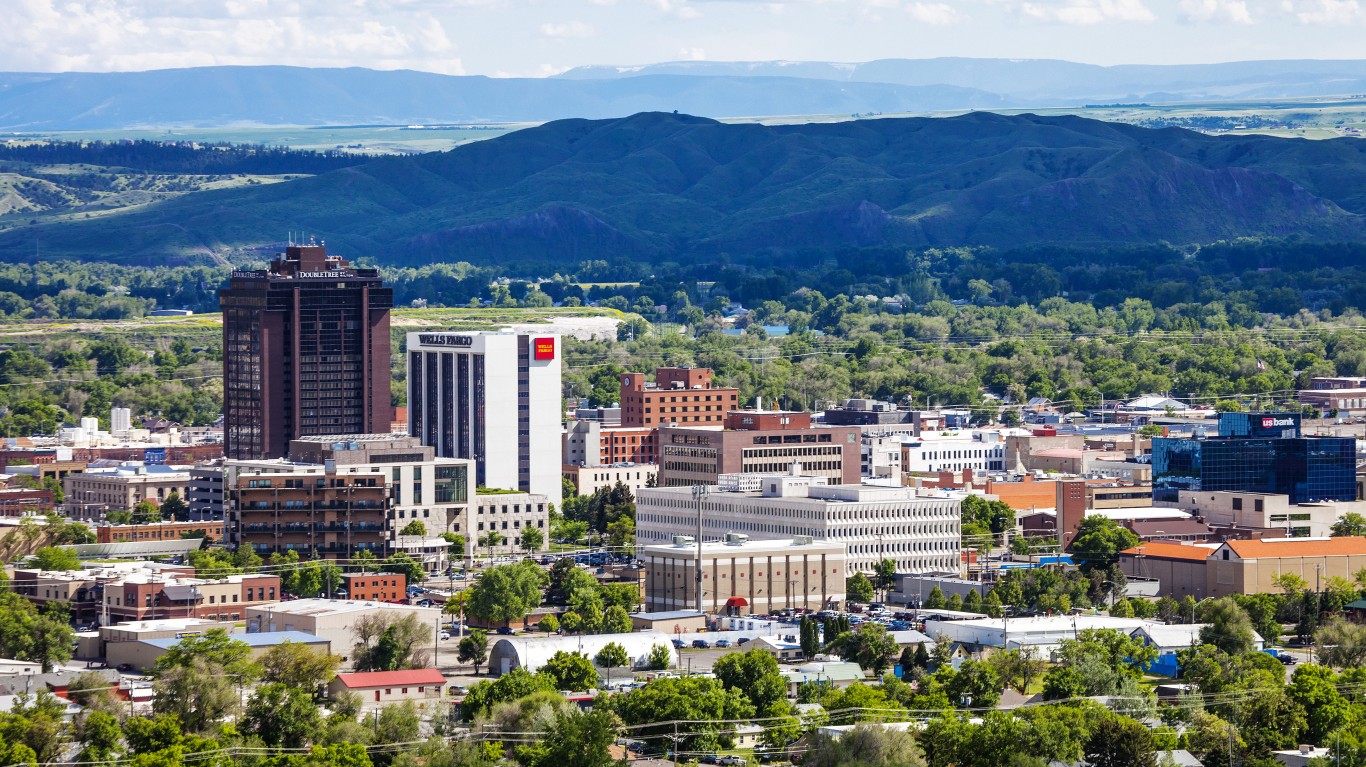

The Food and Drug Administration on Monday approved the first new treatment for Alzheimer’s disease in about 20 years. Currently available Alzheimer’s drugs treat the disease’s symptoms. The newly-approved medicine, called Aduhelm, is the first to attack a substance that could be associated with the underlying causes of the disease — a toxic and sticky protein in the brain called amyloid.
The new drug, which was approved through an accelerated process, reduces clumps of the protein so, it is believed, they don’t disrupt brain cells function, and thus help slow the progression of the disease.
The Alzheimer’s Association estimates that 6.0 million Americans 65 and older were living with the disease as of 2020, or 12% of the 65 and over population. As more and more of the baby boomer generation reaches that age, the number of Americans with the disease is projected to grow to 7.2 million by 2025, an 18.5% increase from 2020.
Yet this growth will not be uniform everywhere. In some states, the number of 65 and older people with Alzheimer’s disease is projected to grow by less than 10%, while in others it is projected to grow by more than 30%.
To determine the states where Alzheimer’s is soaring, 24/7 Tempo reviewed the projected increase in the number of Americans 65 and older with Alzheimer’s disease between 2020 and 2025 in every state from the 2021 Alzheimer’s Association’s Alzheimer’s disease Facts and Figures report.
In addition to the health challenges faced by those with the disease, Alzheimer’s care can be incredibly costly. According to the Alzheimer’s Association, more than $51 billion-worth of Medicaid payments were made for Americans 65 and over with Alzheimer’s disease in 2020. Medicaid costs nationwide are projected to grow by 20.2% by 2025.
Americans 65 and older should consider the cost of long-term care when determining when and where they are going to retire. These are all 50 states ranked from worst to best for healthy retirement.
Click here to see the states where Alzheimer’s is soaring
To determine the states where Alzheimer’s is soaring, 24/7 Tempo reviewed the projected increase in the number of Americans 65 and older with Alzheimer’s disease between 2020 and 2025 in every state from the 2021 Alzheimer’s Association’s Alzheimer’s disease Facts and Figures report.
The share of the population that is 65 years or older in each state came from the U.S. Census Bureau’s 2019 American Community Survey. The percentage of Americans 65 and older with Alzheimer’s disease was calculated using Alzheimer’s Association data and population data from the ACS.
The average retirement income by state also comes from the ACS.

50. North Dakota
> Projected increase in adults 65+ with Alzheimer’s disease, 2020-2025: 6.7% (from 15,000 to 16,000)
> Pct. of population 65+: 14.9% — 7th lowest (total: 112,883)
> Pct. of 65+ pop. with Alzheimer’s disease: 13.3% — 5th highest
> Avg. retirement income: $23,445 — 9th lowest
The number of North Dakota residents 65 and older with Alzheimer’s disease is projected to grow from 15,000 in 2020 to 16,000 in 2025, a 6.7% increase — the lowest increase of all 50 states. North Dakota’s population has a relatively low share of older residents, at 14.9% compared with 15.6% of all Americans.
[in-text-ad]

48. Missouri (tied)
> Projected increase in adults 65+ with Alzheimer’s disease, 2020-2025: 8.3% (from 120,000 to 130,000)
> Pct. of population 65+: 16.5% — 21st highest (total: 1,006,725)
> Pct. of 65+ pop. with Alzheimer’s disease: 11.9% — 19th highest
> Avg. retirement income: $23,657 — 11th lowest
Missouri is tied with Wisconsin for the second-lowest projected increase in the number of older adults with Alzheimer’s disease in the next five years, at 8.3%. Age is the biggest risk factor for the disease — the vast majority of those diagnosed are 65 and older. Retired older adults in Missouri with the disease may struggle to afford care as the state’s average retirement income of just under $24,000 is one of the lowest in the nation.

48. Wisconsin (tied)
> Projected increase in adults 65+ with Alzheimer’s disease, 2020-2025: 8.3% (from 120,000 to 130,000)
> Pct. of population 65+: 16.5% — 22nd highest (total: 953,571)
> Pct. of 65+ pop. with Alzheimer’s disease: 12.6% — 9th highest
> Avg. retirement income: $24,064 — 15th lowest
Wisconsin is one of just three states in which the number of people aged 65 and older with Alzheimer’s disease is projected to increase by less than 10% between 2020 and 2025. Though the pace of increase is slower than it is nationwide, the share of 65 and older state residents with the disease is already fairly high at 12.6%, the ninth highest share in the nation.

47. New Jersey
> Projected increase in adults 65+ with Alzheimer’s disease, 2020-2025: 10.5% (from 190,000 to 210,000)
> Pct. of population 65+: 15.9% — 23rd lowest (total: 1,410,285)
> Pct. of 65+ pop. with Alzheimer’s disease: 13.5% — 3rd highest
> Avg. retirement income: $30,400 — 12th highest
New Jersey residents 65 and older are more likely to have Alzheimer’s disease than those in all but two other states, with 13.5% living with the disease. This high percentage is projected to increase by 10.5% in the next five years, one of the lowest increases among states, with the number of 65 and older residents with the disease growing from 190,000 in 2020 to 210,000 in 2025.
[in-text-ad-2]

46. Iowa
> Projected increase in adults 65+ with Alzheimer’s disease, 2020-2025: 10.6% (from 66,000 to 73,000)
> Pct. of population 65+: 16.7% — 16th highest (total: 525,522)
> Pct. of 65+ pop. with Alzheimer’s disease: 12.6% — 11th highest
> Avg. retirement income: $22,021 — 4th lowest
The number of adults 65 and over in Iowa with Alzheimer’s disease is projected to increase by 10.6% from 2020 to 2025 — the fifth lowest increase of all states. Iowa’s retirement income of $22,021 is lower than that of all but three other states, which may make it more difficult for those with Alzheimer’s disease to afford the care they need.

45. South Dakota
> Projected increase in adults 65+ with Alzheimer’s disease, 2020-2025: 11.1% (from 18,000 to 20,000)
> Pct. of population 65+: 16.3% — 23rd highest (total: 141,534)
> Pct. of 65+ pop. with Alzheimer’s disease: 12.7% — 8th highest
> Avg. retirement income: $23,284 — 6th lowest
The number of residents 65 and over with Alzheimer’s disease in South Dakota is projected to increase by 11.1% from 2020 to 2025, less than the 18.5% projected increase nationwide during that time. South Dakota reported the highest number of Alzheimer’s deaths per capita, with 56 Alzheimer’s-related deaths for every 100,000 residents in 2019, compared with 37 per 100,000 residents nationwide.
[in-text-ad]

44. New York
> Projected increase in adults 65+ with Alzheimer’s disease, 2020-2025: 12.2% (from 410,000 to 460,000)
> Pct. of population 65+: 16.1% — 25th highest (total: 3,146,306)
> Pct. of 65+ pop. with Alzheimer’s disease: 13.0% — 7th highest
> Avg. retirement income: $29,780 — 13th highest
Though New York has the seventh highest percentage of older adults with Alzheimer’s disease among states, at 13.0%, it has one of the lowest mortality rates from the disease in the country. New York reported 19 deaths from Alzheimer’s disease per 100,000 people in 2019, about half of the 37 Alzheimer’s deaths per 100,000 residents nationwide.

43. Rhode Island
> Projected increase in adults 65+ with Alzheimer’s disease, 2020-2025: 12.5% (from 24,000 to 27,000)
> Pct. of population 65+: 16.8% — 14th highest (total: 177,889)
> Pct. of 65+ pop. with Alzheimer’s disease: 13.5% — 2nd highest
> Avg. retirement income: $27,042 — 22nd highest
Rhode Island has the second highest share of adults 65 and older who already have Alzheimer’s disease, at 13.5%. The share of older residents in the state is relatively large — 16.8% are 65 and older, and 7.4% are 75 and older, the 14th and ninth highest shares, respectively. From 2020 to 2025, the number of people with Alzheimer’s is projected to increase by 12.5% to 27,000 total people.

42. Kansas
> Projected increase in adults 65+ with Alzheimer’s disease, 2020-2025: 12.7% (from 55,000 to 62,000)
> Pct. of population 65+: 15.4% — 19th lowest (total: 449,327)
> Pct. of 65+ pop. with Alzheimer’s disease: 12.2% — 15th highest
> Avg. retirement income: $22,745 — 5th lowest
The number of Kansas residents 65 and older with Alzheimer’s disease is projected to increase by 12.7%, well below the estimated 18.5% increase nationwide. Kansas has one of the higher shares of older adults with Alzheimer’s disease, but it has a relatively low mortality rate from the disease, at 29 Alzheimer’s deaths per 100,000 residents — the eighth lowest rate among all states.
[in-text-ad-2]

41. West Virginia
> Projected increase in adults 65+ with Alzheimer’s disease, 2020-2025: 12.8% (from 39,000 to 44,000)
> Pct. of population 65+: 19.4% — 3rd highest (total: 352,114)
> Pct. of 65+ pop. with Alzheimer’s disease: 11.1% — 17th lowest
> Avg. retirement income: $20,299 — 2nd lowest
West Virginia has the third highest share of residents who are 65 and older. State residents may have a harder time affording Alzheimer’s care than typical retired Americans, as the state’s average retirement income of $20,299 is the second lowest of any U.S. state.

40. Illinois
> Projected increase in adults 65+ with Alzheimer’s disease, 2020-2025: 13.0% (from 230,000 to 260,000)
> Pct. of population 65+: 15.2% — 12th lowest (total: 1,942,534)
> Pct. of 65+ pop. with Alzheimer’s disease: 11.8% — 21st highest
> Avg. retirement income: $30,633 — 11th highest
The number of older adults with Alzheimer’s disease is projected to increase from 230,000 in 2020 to 260,000 in 2025. This 13.0% increase is lower than in all but 10 other states and may be due at least in part to the relatively low share of older adults in the state. Roughly one in five Illinois residents who retired moved out of the state, according to a National Movers Study. Just 15.2% of the state’s population is 65 or older, the 12th lowest share in the nation.
[in-text-ad]

39. Oklahoma
> Projected increase in adults 65+ with Alzheimer’s disease, 2020-2025: 13.4% (from 67,000 to 76,000)
> Pct. of population 65+: 15.3% — 13th lowest (total: 603,394)
> Pct. of 65+ pop. with Alzheimer’s disease: 11.1% — 19th lowest
> Avg. retirement income: $23,308 — 7th lowest
Oklahoma has a relatively low share of residents 65 and older, at 15.3% of the state’s population — the 13th lowest share among states. The number of older residents with Alzheimer’s disease is not projected to increase much relative to other states. It is projected to increase by 13.4% in the next five years, a lower percentage than all but 11 other states.

38. Ohio
> Projected increase in adults 65+ with Alzheimer’s disease, 2020-2025: 13.6% (from 220,000 to 250,000)
> Pct. of population 65+: 16.7% — 18th highest (total: 1,941,294)
> Pct. of 65+ pop. with Alzheimer’s disease: 11.3% — 21st lowest
> Avg. retirement income: $25,952 — 25th highest
The Alzheimer’s Association projects that by 2025, 250,000 Ohio residents 65 and older will live with Alzheimer’s disease, a 13.6% increase from 2020. The Midwestern state has the 16th highest Alzheimer’s mortality rate of all states. There were 45 Alzheimer’s-related deaths for every 100,000 residents in 2019, well above the national rate of 37 per 100,000.

37. Connecticut
> Projected increase in adults 65+ with Alzheimer’s disease, 2020-2025: 13.8% (from 80,000 to 91,000)
> Pct. of population 65+: 16.8% — 15th highest (total: 601,053)
> Pct. of 65+ pop. with Alzheimer’s disease: 13.3% — 4th highest
> Avg. retirement income: $31,420 — 7th highest
Connecticut has the fourth highest share of older residents with Alzheimer’s, at 13.3%. The percentage of adults with the disease is projected to increase by 13.8% in the next five years, compared with an 18.5% increase nationwide. In spite of the high share of Alzheimer’s disease among those 65 and older in the state, Connecticut reported a relatively low Alzheimer’s mortality rate at 27 deaths per 100,000 residents — lower than all but six other states.
[in-text-ad-2]

36. Mississippi
> Projected increase in adults 65+ with Alzheimer’s disease, 2020-2025: 14.0% (from 57,000 to 65,000)
> Pct. of population 65+: 15.4% — 20th lowest (total: 461,022)
> Pct. of 65+ pop. with Alzheimer’s disease: 12.4% — 13th highest
> Avg. retirement income: $23,361 — 8th lowest
Mississippi is one of just 15 states in which the total number of Alzheimer’s disease cases in the 65 and older population is projected to increase by 14.0% or less. Alzheimer’s disease is relatively common among Mississippi’s older population, with 12.4% of state residents 65 and older living with the disease, a higher share than all but a dozen other states.

34. Pennsylvania (tied)
> Projected increase in adults 65+ with Alzheimer’s disease, 2020-2025: 14.3% (from 280,000 to 320,000)
> Pct. of population 65+: 17.8% — 7th highest (total: 2,281,720)
> Pct. of 65+ pop. with Alzheimer’s disease: 12.3% — 14th highest
> Avg. retirement income: $23,681 — 12th lowest
In Pennsylvania, 17.8% of residents are 65 and older, and 7.9% are 75 and older — the seventh and fourth highest percentages among states, respectively. The Alzheimer’s Association projects just a 14.3% increase in the number of adults 65 and older with the disease from 2020 to 2025, well below the projected national increase of around 18.5%.
[in-text-ad]

34. Nebraska (tied)
> Projected increase in adults 65+ with Alzheimer’s disease, 2020-2025: 14.3% (from 35,000 to 40,000)
> Pct. of population 65+: 15.4% — 15th lowest (total: 294,069)
> Pct. of 65+ pop. with Alzheimer’s disease: 11.9% — 20th highest
> Avg. retirement income: $23,704 — 13th lowest
The total number of those in Nebraska aged 65 and older with Alzheimer’s disease is projected to increase from 35,000 in 2020 to 40,000 in 2025, an increase of 14.3%. The Alzheimer’s Association’s projections are based on projected population growth of residents who are 65 or older. Some 15.4% of Nebraska residents are 65 or older, compared with 15.6% of Americans overall.

33. Alabama
> Projected increase in adults 65+ with Alzheimer’s disease, 2020-2025: 14.6% (from 96,000 to 110,000)
> Pct. of population 65+: 16.5% — 20th highest (total: 804,881)
> Pct. of 65+ pop. with Alzheimer’s disease: 11.9% — 18th highest
> Avg. retirement income: $24,816 — 22nd lowest
The number of Alzheimer’s disease cases within the older population in Alabama is projected to increase by 14.6% from 2020 to 2025, from 96,000 to 110,000. Alabama reported more Alzheimer’s deaths per capita than all but two other states in 2019. The state reported 54 Alzheimer’s-related deaths per 100,000 residents, compared with 37 deaths per 100,000 Americans.

32. Kentucky
> Projected increase in adults 65+ with Alzheimer’s disease, 2020-2025: 14.7% (from 75,000 to 86,000)
> Pct. of population 65+: 16.0% — 24th lowest (total: 710,138)
> Pct. of 65+ pop. with Alzheimer’s disease: 10.6% — 6th lowest
> Avg. retirement income: $24,087 — 16th lowest
A relatively low percentage of Kentucky residents 65 and older have Alzheimer’s disease at 10.6% — a lower share than in all but five other states. The total number of Kentuckians 65 and over living with Alzheimer’s is projected to grow from 75,000 to 86,000 from 2020 to 2025, a 14.7% increase. For context, the number of older Americans with Alzheimer’s is projected to grow by 18.5% during that time.
[in-text-ad-2]

31. Massachusetts
> Projected increase in adults 65+ with Alzheimer’s disease, 2020-2025: 15.4% (from 130,000 to 150,000)
> Pct. of population 65+: 16.2% — 24th highest (total: 1,107,089)
> Pct. of 65+ pop. with Alzheimer’s disease: 11.7% — 23rd highest
> Avg. retirement income: $30,791 — 9th highest
Massachusetts is projected to have a 15.4% increase in the number of residents 65 and older with Alzheimer’s disease from 2020 to 2025, growing from 130,000 people to 150,000. The U.S. overall is projected to have an 18.5% increase. Massachusetts reported 24 Alzheimer’s-related deaths per 100,000 residents in 2019, the fifth lowest Alzheimer’s mortality rate among all states. Nationwide, the Alzheimer’s mortality rate was 37 per 100,000.

30. Arkansas
> Projected increase in adults 65+ with Alzheimer’s disease, 2020-2025: 15.5% (from 58,000 to 67,000)
> Pct. of population 65+: 16.6% — 19th highest (total: 498,778)
> Pct. of 65+ pop. with Alzheimer’s disease: 11.6% — 24th highest
> Avg. retirement income: $21,770 — 3rd lowest
The number of Arkansas residents 65 and older with Alzheimer’s is projected to grow from approximately 58,000 in 2020 to 67,000 in 2025, a 15.5% increase. This is below the projected 18.5% increase nationwide. Retired Arkansas residents with Alzheimer’s may struggle to afford care as the state’s average retirement income of $21,770 is the third lowest of all states.
[in-text-ad]

29. Michigan
> Projected increase in adults 65+ with Alzheimer’s disease, 2020-2025: 15.8% (from 190,000 to 220,000)
> Pct. of population 65+: 16.7% — 17th highest (total: 1,666,343)
> Pct. of 65+ pop. with Alzheimer’s disease: 11.4% — 22nd lowest
> Avg. retirement income: $24,096 — 17th lowest
The number of Alzheimer’s cases among older Michigan residents is projected to increase by 15.8% between 2020 and 2025, according to the Alzheimer’s Association. In Michigan, 16.7% of residents are in the main risk group for developing Alzheimer’s disease — those aged 65 and older. Comparatively, 15.6% of Americans are at least 65 years old.

26. Tennessee (tied)
> Projected increase in adults 65+ with Alzheimer’s disease, 2020-2025: 16.7% (from 120,000 to 140,000)
> Pct. of population 65+: 16.0% — 25th lowest (total: 1,075,124)
> Pct. of 65+ pop. with Alzheimer’s disease: 11.2% — 20th lowest
> Avg. retirement income: $23,541 — 10th lowest
The total number of Alzheimer’s disease cases among Tennessee residents 65 and older is projected to increase from 120,000 in 2020 to 140,000 by 2025 — a 16.7% increase. Despite the fact that a relatively low share of older Tennessee residents have Alzheimer’s, at 11.2%, the state is tied for the seventh highest Alzheimer’s mortality rate among all states. There were 48 deaths related to the disease for every 100,000 Tennessee residents in 2019, well above the nationwide mortality rate of 37 deaths per 100,000 people.

26. North Carolina (tied)
> Projected increase in adults 65+ with Alzheimer’s disease, 2020-2025: 16.7% (from 180,000 to 210,000)
> Pct. of population 65+: 15.9% — 22nd lowest (total: 1,628,013)
> Pct. of 65+ pop. with Alzheimer’s disease: 11.1% — 16th lowest
> Avg. retirement income: $24,693 — 20th lowest
The number of older North Carolina residents with Alzheimer’s disease is projected to grow from 180,000 in 2020 to 210,000 in 2025, a 16.7% increase. Of all North Carolinians age 65 and older, 11.1% have Alzheimer’s disease. Though this is a lower percentage than in the majority of states, Alzheimer’s deaths are still more common than in most states. North Carolina reported 43 Alzheimer’s-related deaths per 100,000 residents, compared with 37 deaths per 100,000 people across the U.S.
[in-text-ad-2]

26. Washington (tied)
> Projected increase in adults 65+ with Alzheimer’s disease, 2020-2025: 16.7% (from 120,000 to 140,000)
> Pct. of population 65+: 15.1% — 11th lowest (total: 1,117,673)
> Pct. of 65+ pop. with Alzheimer’s disease: 10.7% — 9th lowest
> Avg. retirement income: $28,454 — 17th highest
Washington is one of three states, along with North Carolina and Tennessee, in which the total number of residents ages 65 and older with Alzheimer’s disease is projected to increase by 16.7%. Though this ranks toward the middle of all states, it is below the projected nationwide increase of 18.5%.

24. Indiana (tied)
> Projected increase in adults 65+ with Alzheimer’s disease, 2020-2025: 18.2% (from 110,000 to 130,000)
> Pct. of population 65+: 15.4% — 14th lowest (total: 1,023,588)
> Pct. of 65+ pop. with Alzheimer’s disease: 10.7% — 10th lowest
> Avg. retirement income: $20,156 — the lowest
The number of people 65 and older living with Alzheimer’s in Indiana will rise by 18.2% from 2020 to 2025 to 130,000. Alzheimer’s-related Medicaid costs for state residents who are 65 and older are estimated to increase by 17.1% in the next five years, lower than the projected national increase of 20.2%. Alzheimer’s disease in Indiana has a mortality rate of 38 deaths per 100,000 people, slightly higher than the U.S. average mortality rate that year of 37 deaths per 100,000 people.
[in-text-ad]

24. Maryland (tied)
> Projected increase in adults 65+ with Alzheimer’s disease, 2020-2025: 18.2% (from 110,000 to 130,000)
> Pct. of population 65+: 15.0% — 9th lowest (total: 902,678)
> Pct. of 65+ pop. with Alzheimer’s disease: 12.2% — 17th highest
> Avg. retirement income: $35,242 — the highest
Medicaid costs cover long-term care for residents 65 and older with Alzheimer’s and other forms of dementia. These costs are projected to climb 24.7% in Maryland by 2025. The number of older people with Alzheimer’s is projected to grow from 110,000 in 2020 to 130,000 in 2025, an 18.2% rise. The Alzheimer’s mortality rate in Maryland is the lowest in the country, at 17 deaths per 100,000 people.
23. Louisiana
> Projected increase in adults 65+ with Alzheimer’s disease, 2020-2025: 19.6% (from 92,000 to 110,000)
> Pct. of population 65+: 15.0% — 8th lowest (total: 698,018)
> Pct. of 65+ pop. with Alzheimer’s disease: 13.2% — 6th highest
> Avg. retirement income: $24,780 — 21st lowest
There were 2,165 deaths in Louisiana from Alzheimer’s disease in 2019, or 47 deaths per 100,000 residents, the 10th highest Alzheimer’s mortality rate in the country. Over the five years from 2020 to 2025, the number of older people with the disease is expected to rise by 19.6%, a slightly higher increase than the expected national increase of almost 18.5%. While Louisiana’s share of the population 65 and older residents is among the smallest in the country, the share of people with Alzheimer’s in the age group is among the highest. About 13.2% of the state’s older residents are living with Alzheimer’s dementia, higher than the national average of 12.0%.

21. Maine (tied)
> Projected increase in adults 65+ with Alzheimer’s disease, 2020-2025: 20.7% (from 29,000 to 35,000)
> Pct. of population 65+: 20.0% — 2nd highest (total: 267,568)
> Pct. of 65+ pop. with Alzheimer’s disease: 10.8% — 11th lowest
> Avg. retirement income: $24,421 — 19th lowest
Alzheimer’s disease claimed the lives of 544 Maine residents in 2019 for a mortality rate of 41 per 100,000 people, slightly higher than the national average rate of 37 per 100,000. By 2025, a projected 35,000 people 65 and older in Maine will be living with the disease, a 20.7% increase from 2020. The Alzheimer’s Association projects that the total Medicaid spending for Maine residents 65 and older who have the disease or other form of dementia will grow by 29.5%, the sixth highest increase among states and significantly higher than the projected U.S. increase of 20.2%.
[in-text-ad-2]

21. Hawaii (tied)
> Projected increase in adults 65+ with Alzheimer’s disease, 2020-2025: 20.7% (from 29,000 to 35,000)
> Pct. of population 65+: 17.8% — 8th highest (total: 253,606)
> Pct. of 65+ pop. with Alzheimer’s disease: 11.4% — 23rd lowest
> Avg. retirement income: $31,924 — 5th highest
The number of people in Hawaii living with Alzheimer’s is projected to climb by 20.7% to about 35,000 by 2025, according to the Alzheimer’s Association. Hawaii has a large 65 and older population, and the risk of Alzheimer’s increases with age, doubling every five years after 65. About 17.8% of Hawaiians are 65 and older, the eighth highest share of all states.

19. Delaware (tied)
> Projected increase in adults 65+ with Alzheimer’s disease, 2020-2025: 21.1% (from 19,000 to 23,000)
> Pct. of population 65+: 18.2% — 5th highest (total: 174,174)
> Pct. of 65+ pop. with Alzheimer’s disease: 10.9% — 12th lowest
> Avg. retirement income: $30,734 — 10th highest
In Delaware, the Alzheimer’s Association forecasts a 21.1% increase in Alzheimer’s cases among the 65 and older population between 2020 and 2025 as well as 23.6% increase in Medicaid costs related to caring for older residents with the condition. The state’s 65 and older residents comprise 18.2% of the population, the fifth highest share of all states. As of 2019, Delaware had 17 geriatricians, doctors specializing in health care for older people, fewer doctors than in only seven other states.
[in-text-ad]

19. Colorado (tied)
> Projected increase in adults 65+ with Alzheimer’s disease, 2020-2025: 21.1% (from 76,000 to 92,000)
> Pct. of population 65+: 13.8% — 5th lowest (total: 773,706)
> Pct. of 65+ pop. with Alzheimer’s disease: 9.8% — 2nd lowest
> Avg. retirement income: $31,654 — 6th highest
Alzheimer’s disease mostly affects older people, and Colorado is a relatively young state. State residents who are 65 and older comprise just 13.8% of the population, the fifth lowest share, and only 9.8% of them have Alzheimer’s, the second lowest share. The U.S. Census estimates that the 65 and older population will grow by 32.0% until 2030 and will then comprise 21.0% of the state’s total population. The mortality rate is also relatively low, at 33 Alzheimer’s-related deaths per 100,000 people, the fifth lowest in the country.

18. Minnesota
> Projected increase in adults 65+ with Alzheimer’s disease, 2020-2025: 21.2% (from 99,000 to 120,000)
> Pct. of population 65+: 15.4% — 18th lowest (total: 858,698)
> Pct. of 65+ pop. with Alzheimer’s disease: 11.5% — 24th lowest
> Avg. retirement income: $25,897 — 25th lowest
Alzheimer’s disease claimed 2,436 lives in Minnesota in 2019, or 43 per 100,000 residents. The number of people living with the condition is projected to rise by 21.2%, from 99,000 to 120,000 in the next five years. Medicaid costs related to treating the disease among the state’s older population are estimated to increase by 20.1% by 2025, about the same as the national average projected increase of 20.2%.

16. Oregon (tied)
> Projected increase in adults 65+ with Alzheimer’s disease, 2020-2025: 21.7% (from 69,000 to 84,000)
> Pct. of population 65+: 17.2% — 11th highest (total: 709,555)
> Pct. of 65+ pop. with Alzheimer’s disease: 9.7% — the lowest
> Avg. retirement income: $28,384 — 18th highest
Oregon has the 11th highest share of residents who are 65 and older. While only 9.7% of 65 and over residents have Alzheimer’s, the lowest share among all states, the mortality rate is relatively high. In 2018, there were 47 Alzheimer’s-related deaths per 100,000 people, the eighth highest rate in the county and higher than the U.S. rate of 37 deaths per 100,000 people.
[in-text-ad-2]

16. California (tied)
> Projected increase in adults 65+ with Alzheimer’s disease, 2020-2025: 21.7% (from 690,000 to 840,000)
> Pct. of population 65+: 14.0% — 6th lowest (total: 5,486,041)
> Pct. of 65+ pop. with Alzheimer’s disease: 12.6% — 10th highest
> Avg. retirement income: $34,209 — 3rd highest
About 14.0% of California’s residents are 65 and older, the sixth lowest share in the country, and 12.6% of them have the disease, the 10th highest such share. The number of people 65 and older with Alzheimer’s is expected to increase by about over 21%, from 690,000 in 2020 to 840,000 in 2025. Medicaid spending on Alzheimer’s patients is expected to grow by 24.7% in the next five years, well above the average increase of 20.2% expected nationwide.

15. Idaho
> Projected increase in adults 65+ with Alzheimer’s disease, 2020-2025: 22.2% (from 27,000 to 33,000)
> Pct. of population 65+: 15.4% — 17th lowest (total: 264,889)
> Pct. of 65+ pop. with Alzheimer’s disease: 10.2% — 4th lowest
> Avg. retirement income: $24,250 — 18th lowest
The shares of people in Idaho who are 65 and older, 75 and older, as well as older people currently living with Alzheimer’s, are among the lowest in the county. Some 27,000 people 65 and over in Idaho have the disease, a number that is projected to increase to 33,000 by 2025. As a consequence of the expected growth in Alzheimer’s cases in Idaho, Medicaid costs of caring for residents with the disease are expected to climb between 2020 and 2025 by 31.2%, the fourth highest increase in the country.
[in-text-ad]

14. Texas
> Projected increase in adults 65+ with Alzheimer’s disease, 2020-2025: 22.5% (from 400,000 to 490,000)
> Pct. of population 65+: 12.3% — 3rd lowest (total: 3,462,527)
> Pct. of 65+ pop. with Alzheimer’s disease: 11.6% — 25th highest
> Avg. retirement income: $27,075 — 21st highest
Texas has the third smallest share of the 65 and older population of any state, at 12.3%. The number of 65 and older state residents is expected to increase by 22.5% from 2020 to 2025, the 14th highest increase . In 2020, Medicare spent more than $3 billion on Texas residents living with Alzheimer’s, one of the highest amounts among all states.

13. Montana
> Projected increase in adults 65+ with Alzheimer’s disease, 2020-2025: 22.7% (from 22,000 to 27,000)
> Pct. of population 65+: 18.2% — 6th highest (total: 190,711)
> Pct. of 65+ pop. with Alzheimer’s disease: 11.5% — 25th lowest
> Avg. retirement income: $25,422 — 23rd lowest
Montana has the sixth highest share of adults 65 and over, and the share of those adults currently living with Alzheimer’s is 11.5%, which is in line with the U.S. average of 12.0%. Though the state has a relatively high share of residents who are 65 years or older with an average Alzheimer’s case incidence rate within that population, the mortality rate from Alzheimer’s among people of all ages is among the lowest in the country at 31 deaths per 100,000 people.

12. New Hampshire
> Projected increase in adults 65+ with Alzheimer’s disease, 2020-2025: 23.1% (from 26,000 to 32,000)
> Pct. of population 65+: 17.5% — 9th highest (total: 235,795)
> Pct. of 65+ pop. with Alzheimer’s disease: 11.0% — 15th lowest
> Avg. retirement income: $26,232 — 23rd highest
About 26,000 New Hampshire residents 65 and older were living with Alzheimer’s disease as of 2020. By 2025, that number is expected to increase by more than 23%. The condition primarily affects older adults, and the state’s population of 65 and older comprises 17.5% of New Hampshire residents, the ninth highest share of all states. The state’s estimated increase in Medicaid payments for older residents with the disease by 2025 is 31.9%, the third highest in the country. The U.S. Census estimates that 26.3% of New Hampshire residents will be 60 and older by 2030, a 40% increase in the share of the older population since 2012.
[in-text-ad-2]

11. New Mexico
> Projected increase in adults 65+ with Alzheimer’s disease, 2020-2025: 23.3% (from 43,000 to 53,000)
> Pct. of population 65+: 16.9% — 13th highest (total: 352,687)
> Pct. of 65+ pop. with Alzheimer’s disease: 12.2% — 16th highest
> Avg. retirement income: $29,544 — 14th highest
Both the share of residents 65 and older and the share of older residents with Alzheimer’s in New Mexico are among the highest in the country. There were 43,000 residents who were 65 and older and living with Alzheimer’s in 2020. By 2025, that number is expected to rise by 23.3% to 53,000. The increase will lead to higher costs related to the care of Alzheimer’s patients. Medicaid spending on state residents 65 and older with the disease or other forms of dementia is expected to rise by 22.9% by 2025, slightly more than the U.S. projected average increase of 20.2%.

10. Utah
> Projected increase in adults 65+ with Alzheimer’s disease, 2020-2025: 23.5% (from 34,000 to 42,000)
> Pct. of population 65+: 10.8% — the lowest (total: 333,949)
> Pct. of 65+ pop. with Alzheimer’s disease: 10.2% — 3rd lowest
> Avg. retirement income: $28,749 — 16th highest
Utah had 34,000 people living with Alzheimer’s disease in 2020. Partially because the state’s population of 65 and over is projected to grow by about 30% by 2030 to almost 17.0% of the population, Alzheimer’s cases in Utah are expected to grow by 23.5%, a rate of increase trailing just nine other states. The total Medicaid payments for Utah residents aged 65 and older living with the disease are expected to grow by 27.0% between 2020 and 2025, the seventh largest increase in the country, according to Alzheimer’s Association data.
[in-text-ad]

9. Florida
> Projected increase in adults 65+ with Alzheimer’s disease, 2020-2025: 24.1% (from 580,000 to 720,000)
> Pct. of population 65+: 20.1% — the highest (total: 4,205,428)
> Pct. of 65+ pop. with Alzheimer’s disease: 13.8% — the highest
> Avg. retirement income: $29,073 — 15th highest
Florida has the largest share of elderly population of all states — one in every five residents are 65 or older. About 9.0% of the population is 75 and older, also the largest share of all states. As the state’s older population continues to age, the risk of Alzheimer’s, which increases with age, will also inevitably increase. The number of people with the disease is projected to increase by almost a quarter between 2020 and 2025 from 580,000 to 720,000.

8. South Carolina
> Projected increase in adults 65+ with Alzheimer’s disease, 2020-2025: 26.3% (from 95,000 to 120,000)
> Pct. of population 65+: 17.2% — 10th highest (total: 863,558)
> Pct. of 65+ pop. with Alzheimer’s disease: 11.0% — 14th lowest
> Avg. retirement income: $25,800 — 24th lowest
South Carolina has one of the highest Alzheimer’s death rates in the United States, at 45 deaths per 100,000 people, or a total of 2,323 deaths in 2019. About 860,000 people in the state are 65 and older, or 17.2% of the state’s population, one of the highest shares. About 11.0% of the older adult population lived with Alzheimer’s in 2020. The Alzheimer’s Association projects the number of 65 and over residents with the disease will increase by more than 26% by 2025.

6. Virginia (tied)
> Projected increase in adults 65+ with Alzheimer’s disease, 2020-2025: 26.7% (from 150,000 to 190,000)
> Pct. of population 65+: 15.0% — 10th lowest (total: 1,271,946)
> Pct. of 65+ pop. with Alzheimer’s disease: 11.8% — 22nd highest
> Avg. retirement income: $33,381 — 4th highest
Age increases the risk of developing Alzheimer’s — the risk doubles every five years after 65. The number of people 65 and over with Alzheimer’s in Virginia is expected to increase by 26.7% by 2025, a higher rate than in most states and higher than the national projected increase of 18.5%. The state’s share of residents who are 65 and older is expected to increase to 19% by 2030, according to the University of Virginia Weldon Cooper Center for Public Service.
[in-text-ad-2]

6. Georgia (tied)
> Projected increase in adults 65+ with Alzheimer’s disease, 2020-2025: 26.7% (from 150,000 to 190,000)
> Pct. of population 65+: 13.5% — 4th lowest (total: 1,406,485)
> Pct. of 65+ pop. with Alzheimer’s disease: 10.7% — 7th lowest
> Avg. retirement income: $27,580 — 20th highest
Though the share of Georgia’s population aged 65 and over is relatively low, the proportion of state residents 60 and older is growing faster than any other age group of the population, according to the U.S. Census. By 2030, one in five residents will be 60 or older. The number of people with Alzheimer’s disease in Georgia is projected to increase by 26.7%, more than all but five states, from 150,000 in 2020 to 190,000 in 2025. In 2019, the disease killed 4,221 people, or 40 per 100,000 residents. The U.S. Alzhemer’s mortality rate is 37 per 100,000 people.

5. Alaska
> Projected increase in adults 65+ with Alzheimer’s disease, 2020-2025: 29.4% (from 8,500 to 11,000)
> Pct. of population 65+: 11.2% — 2nd lowest (total: 82,583)
> Pct. of 65+ pop. with Alzheimer’s disease: 10.3% — 5th lowest
> Avg. retirement income: $34,493 — 2nd highest
As of 2020, an estimated 10.3% of Alaska residents 65 and over had Alzheimer’s disease, the nation’s fifth lowest percentage. The number of new cases of the disease in the state is expected to increase by 29.4% by 2025, the fifth highest increase in the country. However, the mortality rate from Alzheimer’s among people of all ages is the second lowest in the U.S, at 18 per 100,000 people.
As a consequence of the rapid growth in Alzheimer’s cases, Medicaid costs of caring for residents with the disease is expected to climb by 44.6%, the highest increase in the country and more than double the U.S. average projected increase of 20.2%.
[in-text-ad]

4. Wyoming
> Projected increase in adults 65+ with Alzheimer’s disease, 2020-2025: 30.0% (from 10,000 to 13,000)
> Pct. of population 65+: 15.7% — 21st lowest (total: 91,462)
> Pct. of 65+ pop. with Alzheimer’s disease: 10.9% — 13th lowest
> Avg. retirement income: $25,972 — 24th highest
The number of people 65 and older with Alzheimer’s disease in Wyoming is expected to surge by 30.0% by 2025, according to the Alzheimer’s Association. Large expected increases in the condition are often the result of large projected increases in the elderly population. Wyoming’s 65 and older population is projected to increase to almost 140,000, or more than a fifth of the state’s total residents by 2030, according to a report by Wyoming’s Department of Administration and Information. Currently, the 65 and older population in the state composes 15.7% of the state’s population.

3. Nevada
> Projected increase in adults 65+ with Alzheimer’s disease, 2020-2025: 30.6% (from 49,000 to 64,000)
> Pct. of population 65+: 15.4% — 16th lowest (total: 457,181)
> Pct. of 65+ pop. with Alzheimer’s disease: 10.7% — 8th lowest
> Avg. retirement income: $31,060 — 8th highest
The number of 65 and older Nevada residents with Alzheimer’s is expected to grow 30.6% between 2020 and 2025. Currently, 15.4% of the state population is 65 years of age or older, and 10.7% of them have the disease, the eighth lowest share in the country. Nevada has the fourth lowest mortality rate from the condition, at 22 per 100,000 residents, or a total of 678 deaths in 2019.

2. Vermont
> Projected increase in adults 65+ with Alzheimer’s disease, 2020-2025: 30.8% (from 13,000 to 17,000)
> Pct. of population 65+: 18.8% — 4th highest (total: 117,264)
> Pct. of 65+ pop. with Alzheimer’s disease: 11.1% — 18th lowest
> Avg. retirement income: $23,945 — 14th lowest
Vermont’s residents who are 65 years of age or older make up 18.8% of the state’s population, the fourth highest share among all states. Vermont also has a large portion of people who are older than 75 in the state — 7.4% of residents, the seventh highest such share. The risk of Alzheimer’s increases significantly with age.
[in-text-ad-2]

1. Arizona
> Projected increase in adults 65+ with Alzheimer’s disease, 2020-2025: 33.3% (from 150,000 to 200,000)
> Pct. of population 65+: 17.1% — 12th highest (total: 1,206,748)
> Pct. of 65+ pop. with Alzheimer’s disease: 12.4% — 12th highest
> Avg. retirement income: $27,990 — 19th highest
About 17.1% of Arizona’s population is 65 and over, and 12.4% of them have Alzheimer’s. The number of older adults with the condition is expected to increase by a third in the next five years, more than any other state. In 2019, Alzheimer’s mortality rate was 42 deaths per 100,000 residents, higher than the national rate of 37 per 100,000 people.
Take This Retirement Quiz To Get Matched With A Financial Advisor (Sponsored)
Take the quiz below to get matched with a financial advisor today.
Each advisor has been vetted by SmartAsset and is held to a fiduciary standard to act in your best interests.
Here’s how it works:
1. Answer SmartAsset advisor match quiz
2. Review your pre-screened matches at your leisure. Check out the
advisors’ profiles.
3. Speak with advisors at no cost to you. Have an introductory call on the phone or introduction in person and choose whom to work with in the future
Take the retirement quiz right here.
Thank you for reading! Have some feedback for us?
Contact the 24/7 Wall St. editorial team.
 24/7 Wall St.
24/7 Wall St. 24/7 Wall St.
24/7 Wall St. 24/7 Wall St.
24/7 Wall St. 24/7 Wall St.
24/7 Wall St. 24/7 Wall St.
24/7 Wall St.
 24/7 Wall St.
24/7 Wall St.


